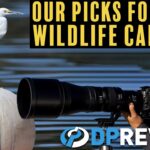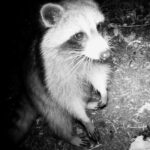When you’re out in the wild, camera in hand, every fleeting moment counts. The rustle of leaves, the flash of feathers, the silent prowl of a predator – these instances are ephemeral, yet they hold the power to become immortal through your lens. But to capture them, you need more than just passion; you need the right tool. So, what is the best camera for wildlife photography? Let’s dive in.
Key Takeaways
-
Autofocus speed and accuracy are crucial for capturing sharp wildlife images.
-
High resolution allows for detailed shots and the ability to crop without losing quality.
-
A fast burst rate is essential to catch rapid movements of wildlife.
-
Advanced video capabilities enhance the storytelling aspect of wildlife photography.
-
Camera choice can vary based on budget, with options available for under $500 to over $5000.
The Best Camera Features for Wildlife and Nature Photography
Before we talk about specific camera models, let’s understand the features that make a camera excel in wildlife photography. These aspects can make or break your ability to capture stunning, once-in-a-lifetime shots.
Sharp and Fast Autofocus
Imagine this: a majestic eagle is about to snatch its prey from the water. Your heart races, you aim your camera, and… the autofocus lags. The moment is gone, and so is your shot. This is why a camera with a sharp and fast autofocus system is non-negotiable. It needs to lock onto moving subjects quickly and track them accurately as they move.
High Resolution for Detailed Images
Wildlife photography often involves zooming in on distant subjects. A high-resolution camera allows you to capture the fine details – the texture of fur, the intricate pattern of scales, the delicate veins in a butterfly’s wings. Moreover, it gives you the flexibility to crop your images in post-processing without significant loss of quality.
But remember, more megapixels isn’t always better. It’s the balance between resolution and sensor size that counts, as larger sensors generally perform better in low light conditions – a common scenario in the wild.
Burst Speed (Frames Per Second)
Wildlife is unpredictable. Animals don’t wait for photographers. A camera with a high burst rate can shoot a rapid sequence of images within seconds, increasing your chances of capturing the action. Whether it’s a bird in flight or a leopard in mid-pounce, burst speed can make all the difference.
-
Look for a camera with at least 10 frames per second (fps) for starting out.
-
Professional wildlife photographers often use cameras with 20 fps or higher.
But it’s not just about the number of shots. The buffer capacity – how many shots the camera can take before it needs to pause and save to the memory card – is equally important.
Advanced Video Capabilities
Wildlife photography isn’t just about stills. Video adds a dynamic layer to your storytelling. Advanced video capabilities, such as 4K resolution and high frame rate options, allow you to capture the nuances of wildlife behavior with clarity.
-
4K video is becoming standard, but some cameras offer 6K or even 8K.
-
High frame rates are great for creating slow-motion footage.
Video features like focus peaking and zebra stripes can help ensure your subjects are sharp and your exposure is spot on.

“Best Camera for Wildlife Photography …” from www.youtube.com and used with no modifications.
Top Camera Models for Wildlife Photography
Now that we’ve established what features are important, let’s look at some of the top camera models that incorporate these features and are favored by wildlife photographers.
Nikon Z6 II
The Nikon Z6 II is a versatile full-frame mirrorless camera that offers a great balance of resolution, speed, and video performance. Its 24.5-megapixel sensor provides high-quality images, and with a burst rate of up to 14 fps, you won’t miss a beat in the animal kingdom.
“The autofocus on the Z6 II is lightning-fast, making it perfect for tracking birds in flight or fast-moving mammals.” – a seasoned wildlife photographer.
The camera’s dual card slots ensure you have enough storage for high-resolution images and videos, and its robust build can withstand the demands of outdoor photography.
Let’s break it down further: if you’re interested in wildlife filmmaking equipment and gear, there are several factors to consider.
-
24.5 MP full-frame CMOS sensor.
-
Up to 14 fps continuous shooting.
-
4K UHD video recording at 60p.
-
Dual EXPEED 6 image processors for superior autofocus performance.
And the best part? The Z6 II’s in-body image stabilization means you can shoot handheld in lower light conditions, giving you more freedom to move and react quickly.
Canon EOS R6 Mark II
For Canon enthusiasts, the EOS R6 Mark II is a powerhouse. It boasts a 20-megapixel full-frame sensor and an impressive 20 fps burst speed with its electronic shutter – ideal for capturing the fastest wildlife action without missing a frame.
“The R6 Mark II’s animal eye-tracking autofocus is a game-changer, locking onto subjects with precision and ease.” – a wildlife photographer’s review.
Its video capabilities are equally impressive, offering 4K at 60 fps for smooth, high-resolution footage. Plus, the camera’s weather-sealing means it can handle the elements, which is often a reality when shooting wildlife.
-
20 MP full-frame CMOS sensor.
-
Up to 20 fps continuous shooting with electronic shutter.
-
4K 60p and Full HD 120p video recording.
-
Next-generation Dual Pixel CMOS AF II system.
Whether you’re in the rainforest or on the savannah, the R6 Mark II is built to perform.
Sony α1 (Alpha 1)
Sony’s flagship α1 is a technological marvel, boasting a 50.1-megapixel sensor and a blistering 30 fps burst rate. It’s a top-tier choice for those who demand the highest resolution and speed. The α1 also shines in video, with 8K recording that opens up new creative possibilities.
But all this power comes with a higher price tag, making it an investment for serious wildlife photographers. Still, for those who want the best of the best, the α1 delivers in spades.
Here’s a snapshot of what the Sony α1 offers:
-
50.1 MP full-frame Exmor RS CMOS sensor.
-
Up to 30 fps continuous shooting.
-
8K 30p and 4K 120p video recording.
-
Advanced Real-time Eye AF for animals.
With its cutting-edge autofocus system and high-resolution sensor, the α1 is a formidable tool for capturing wildlife in all its splendor.
Understanding that not everyone’s budget stretches to the high-end models, let’s explore the best wildlife photography cameras across various price ranges. Each of these cameras brings something unique to the table, offering a balance between cost and capability.
High-End Models Under $5000
For those who have a bit more to invest in their wildlife photography gear, there are some exceptional cameras under $5000. These models often provide professional-level features, such as full-frame sensors, robust build quality, and advanced autofocus systems that can keep pace with the most elusive wildlife. Discover the capabilities of high-end models by exploring our Nikon D850 review for nocturnal photography.
Mid-Range Options Under $2500
Mid-range cameras are perfect for serious hobbyists or emerging professionals. These cameras typically offer a great combination of features and performance, without the premium price tag of the high-end models. You can expect to find solid autofocus systems, decent burst rates, and good image quality.
Budget Picks Under $1000
Even on a tight budget, there are some great cameras that can take your wildlife photography to new heights. These budget-friendly options may not have all the bells and whistles of their pricier counterparts, but they can still deliver quality images and offer a good starting point for those just getting into the field.
Now, let’s take a closer look at specific use cases for wildlife photography cameras, because the best camera for you depends on what and how you like to shoot.
Specific Use Cases for Wildlife Photography Cameras
Best Camera for Bird Photography
Bird photography is all about speed and precision. You need a camera that can focus quickly and accurately on small, fast-moving subjects. Additionally, a high burst rate is beneficial for capturing birds in flight.
-
Look for cameras with advanced autofocus systems that include bird tracking.
-
A high burst rate, around 10 fps or more, is ideal for capturing birds in motion.
-
A camera with a crop sensor can give you extra reach with your lenses.
The Canon EOS 7D Mark II, for example, is renowned for its fast autofocus and high burst rate, making it a favorite among bird photographers.
Optimal Cameras for Mammal Photography
When photographing larger mammals, the focus is often on detail and the ability to work in varying light conditions. Cameras with larger sensors are typically better at capturing fine details and perform well in low light, making them suitable for early morning or late evening shoots.
The Nikon D850, with its high resolution and excellent dynamic range, is often recommended for capturing the rich textures and tones of mammal fur.
Choosing the Right Camera for Underwater Wildlife Photography
Underwater wildlife photography requires cameras that can handle challenging lighting conditions and offer good water resistance, either natively or through housings. A fast autofocus and good color reproduction are also key.
The Olympus Tough TG-6 is a popular choice for its rugged design and impressive macro capabilities, making it ideal for capturing the smaller wonders of the underwater world.
Versatile Options for Diverse Wildlife Photography
If your wildlife photography takes you from the savannah to the sea, versatility is key. You’ll want a camera that performs well across a range of scenarios, from tracking fast-moving subjects to capturing detailed static shots.
The Sony α7 IV is a well-rounded camera that offers flexibility for various wildlife photography scenarios, with good performance across both stills and video.
Add-ons and Accessories to Enhance Wildlife Photography
Beyond the camera body, there are several add-ons and accessories that can significantly enhance your wildlife photography experience.
Telephoto Lenses
Telephoto lenses are essential for getting up close and personal with wildlife without disturbing them. Look for lenses with a focal length of at least 300mm for smaller wildlife and birds, and consider lenses with built-in stabilization for sharper images.
The Sigma 150-600mm f/5-6.3 DG OS HSM Contemporary is a great example of an affordable yet high-quality telephoto lens that can bring distant subjects into clear view.
Tripods and Stabilization Gear
Steady shots are crucial, especially when working with long lenses and slow shutter speeds. A sturdy tripod or monopod can make all the difference in getting sharp images.
The Manfrotto MT055CXPRO3 Carbon Fiber Tripod is lightweight yet durable, ideal for long treks into the wilderness.
Camera Cases and Weather Protection
Protecting your gear from the elements is vital in wildlife photography. Weatherproof cases and camera covers ensure that rain, dust, or snow won’t stop you from getting the shot.
The Lowepro Flipside 400 AW II is a camera backpack that offers ample protection and quick access to your gear, so you’re always ready for the action.
Furthermore, don’t forget about the power solutions. Wildlife photography often involves long days in the field, and running out of battery can mean missing the golden shot. Invest in additional batteries, and consider a solar charger if you’re going to be off the grid for extended periods.
Finally, remember that the best camera is the one you have with you. While gear is important, it’s your vision and creativity that will truly bring your wildlife photos to life. So, choose the camera that fits your needs, get out there, and start shooting! For more in-depth advice, check out our guide on the best wildlife filming cameras.
Conclusion
Embarking on the journey of wildlife photography is an adventure that requires not just skill and patience, but also the right equipment. Choosing the best camera for wildlife photography is about finding the balance between speed, resolution, and durability to suit your particular needs and budget.
Whether you’re a beginner looking to capture birds in your backyard or a seasoned pro stalking big game on the savannah, the right camera can make all the difference. Remember to consider the types of wildlife you’re most passionate about capturing and choose a camera and accessories that will help you tell the stories you want to share with the world.
Key Findings
The best wildlife photography camera is one that combines fast and accurate autofocus, high resolution for detailed images, a swift burst rate, and excellent video capabilities. Models like the Nikon Z6 II, Canon EOS R6 Mark II, and Sony α1 stand out as top choices for different reasons, but all meet these critical criteria.
Final Recommendations Based on Individual Needs
Your choice of camera should ultimately be guided by your specific needs, preferences, and budget. For beginners, cameras like the Nikon D3500 provide an affordable entry point without compromising on quality. Intermediate photographers might look to the Canon EOS 90D for a balance of features and price. Professionals or those seeking the highest quality might invest in the Sony α1 or Canon EOS R5.
No matter what gear you choose, the most important thing is to get out there and start capturing the beauty of the natural world. With practice, patience, and the right camera in hand, the possibilities are endless.
Frequently Asked Questions (FAQ)
As we wrap up our exploration of the best cameras for wildlife photography, you might still have a few questions. Let’s tackle some of the most common queries. For more detailed information, you can read about professional gear choices and tips on wildlife filming cameras.
What are the essential camera features for wildlife photography?
The essential features for a wildlife photography camera include:
-
Fast and accurate autofocus to keep up with moving subjects.
-
High resolution for detailed images and the ability to crop in post-processing.
-
High burst rate to capture action sequences.
-
Robust build quality to withstand harsh outdoor conditions.
-
Good low light performance for early morning or late evening shoots.
“A camera that excels in speed, resolution, and durability will be your best companion in the wild. It’s about capturing the fleeting moments with clarity and brilliance.” – a wildlife photography workshop leader.
What is the best budget camera for wildlife photography?
For those on a budget, the Nikon D5600 and Canon EOS Rebel T7i are excellent choices. They offer great image quality, decent autofocus systems, and are compatible with a wide range of lenses, which is crucial for wildlife photography.
These cameras strike a good balance between price and performance, making them accessible for photographers who are just starting out or are mindful of their budget.
How important is burst speed in wildlife photography?
Burst speed is incredibly important in wildlife photography. It allows you to capture multiple images in quick succession, which is crucial when dealing with fast-moving subjects. A high burst rate increases your chances of getting that perfect shot with the animal in the ideal pose or action.
Most importantly, look for a camera with a burst rate of at least 10 fps for effective wildlife photography.
Are mirrorless cameras better than DSLRs for wildlife photography?
Mirrorless cameras have several advantages over DSLRs, such as lighter weight, faster burst rates, and often better video capabilities. However, DSLRs still offer benefits like longer battery life and a wider selection of lenses. Ultimately, the choice between mirrorless and DSLR depends on personal preference and the specific needs of your wildlife photography.
Both systems have their champions among wildlife photographers, and it’s worth trying out both to see which suits your style and needs better.
What accessories should I invest in for wildlife photography?
In addition to a good camera and lens, consider investing in the following accessories:
-
A sturdy tripod or monopod for stabilization, especially with long lenses.
-
Extra batteries and memory cards to ensure you’re always ready to shoot.
-
Protective gear for your camera to shield it from the elements.
-
Camera bags or backpacks designed for quick access and comfortable transport.
-
Teleconverters or extenders to increase the reach of your lenses without sacrificing too much light or quality.
With these accessories, you’ll be well-equipped to handle the challenges of wildlife photography and focus on capturing the beauty of nature.




